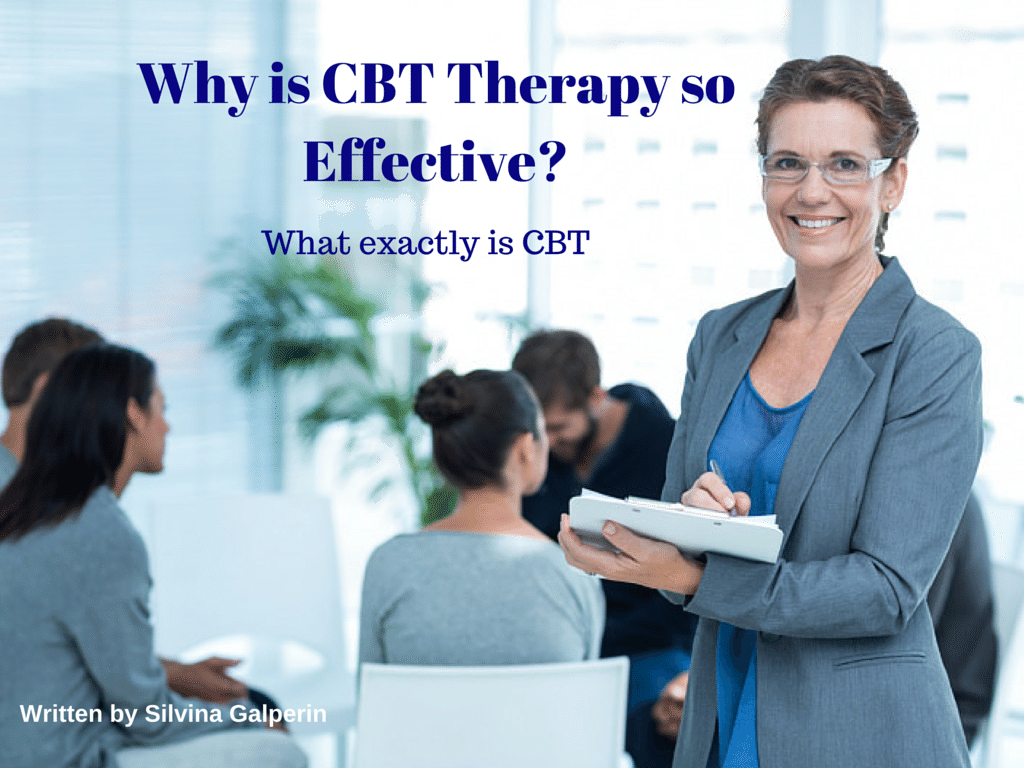What is CBT therapy?
- CBT stands for Cognitive Behavioural Therapy. CBT therapy is based on the cognitive model which focuses on the interconnection between our thoughts, emotions, bodily sensations and actions.
- CBT is a short-term therapy focused on the here and now. It uses a collaborative approach between the therapist and the client.
- The treatment plan is established after an initial assessment. This allows the therapist to develop a case conceptualization to share with the client and together decide on the goals for treatment that the client would like to achieve.
- CBT educates clients about their specific issues from a psychological perspective. This is called psychoeducation. The therapist starts by providing psychoeducation about the specific disorder that the client presents so they can understand how things work and why they unfold in a certain way. This new insight helps people to adjust behaviours that they didn’t know were actually feeding their problem.
- Clients are introduced to particular exercises and techniques that proved to be helpful through research studies to many people with similar issues or disorders. These exercises walk people through the mechanism of changing their unhelpful beliefs by replacing them with new ones that will spark a more positive outlook and change their emotional response.
- For example, people with depression tend to ruminate about their sadness, their difficulties in life, and experience feelings of self-pity and worthlessness. They believe that by thinking over and over about these things they may be able to figure out a way out of that mental zone. However, the more they engage in this depressive thinking, the more their mood decreases and this creates a downward spiral that they cannot escape. People do need strategies to discover how to take themselves out of that negative downward spiral. We are not born with that knowledge and that is exactly what people learn in their CBT sessions: how to get themselves out of this hole of misery, caused by their negative thoughts and feelings.
CBT is a research-based therapeutic treatment that and has proven to help many people overcome their suffering and live more fulfilling lives. Studies show that people with depression, anxiety (including anxiety in children), social anxiety, anger management and personality disorders who received CBT treatment got significantly better. Several research studies showed that clients who completed a CBT treatment presented a significant improvement of their disorders compared with their initial levels. To look at some of the research see:
The Efficacy of Cognitive Behavioral Therapy: A Review of Meta-analyses
CBT is as effective as antidepressant medication (Vittengl et al, 2009, in Otto, 2013) and better to medication for preventing relapse after treatment. This is because in therapy, clients learn mechanisms to cope which they continue to apply long after treatment ends.
What Is The Goal In CBT Treatment?
- To help clients learn strategies to help themselves without the need of the therapist
- To teach clients how to get out of the downward spiral caused by stress and mental health disorders
- To inspire clients to challenge their negative beliefs and realize that there are other ways of interacting and facing life situations that result in positive outcomes.
- To help people live active, fulfilling lives according to their own values.
- See the worksheet we use to help clients clarify their goals for therapy
What does it look like to engage in a CBT treatment?
You will meet with your therapist once a week at the beginning and biweekly later on in treatment. The first session the therapist will do an assessment to decide what will be the best plan for you. This plan will be based on you current situation, problems, difficulties, goals and what you would like to change. You will agree with your therapist what you want to focus on based on your particular concerns, goals and your values, which your therapist will help to clarify. Once you have agreed on your goals for treatment, you will start coming once a week for a few weeks. You will start getting the benefits of your new ways of handling things and probably start to feel more self-confident as well. At this point, sessions can be biweekly until the end of treatment.The therapist is like a coach. Each session your therapist will teach you one or more skills that you can use, based on your concerns and goals. You will use these new skills between sessions and experiment for yourself how they are working for you. You can process how each of these new strategies are working for you so you will continue doing what is working and make changes if needed
What will you do in your CBT sessions?
- Each session you will agree with your therapist on your agenda for the session. You may include situations that happened during the week that you didn’t know how to handle, events that are going to happen in the next days and you have concerns about or things from the past that still come to your mind and would like to address.
- Usually you will review the homework from your last session to have the opportunity to acknowledge your gains since last session and understand the things that did not go very well.
- There is also a time to discuss your thoughts about the previous session and if something bothered you about it
- You will talk in depth about one of the issues that are connected with your goals and discover together with your therapist new aspects of each situation that you were not aware before.
- Figure out options to do things differently and learn new skills to help you advance towards your goal
- Plan how to apply your new learning between sessions to incorporate that new knowledge into your daily life
How many sessions does it take?
The number of sessions depends on several factors. Chronic vs recent condition. How long have you been struggling with the issue that brings you to therapy. The longer it has been troubling you, the longer it takes to change it. Your level of functioning outside of therapy. People that are working (including at home) or studying usually advance faster because they are trained to pay attention, focus on their tasks and this will help them focus during the session and apply their learnings. People with certain learning disabilities will take longer to learn the strategies to change but will definitely benefit from CBT if they are motivated and optimistic. Motivation to engage in the sessions, actively participate and do the homework between the sessions. Optimism about therapy. People that believe therapy will help them, engage with a positive attitude and get well faster. We can usually teach all the strategies for a person that comes for a specific anxiety disorder in between 8 to 16 sessions depending on the complexity of the disorder and response of the client to treatment.

Dr. Silvina Galperin is a clinical psychologist at CBT Psychology for Personal Development. She has helped many people learn ways to get themselves out of a depression, manage their anxiety, phobia, anger management and other mental health disorders. We provide CBT (Cognitive Behavioural Therapy) which is the gold standard psychological treatment. The effectiveness of this treatment has proved to help thousands of people around the world. Our therapists are highly trained in CBT.
If you are interested in CBT you can reach us at info@cbtpsychology.com or call at 905-597-4404.
Read more about CBT techniques
Written by: Dr. Silvina Galperin PhD, C. Psych.




